RV Waste Tanks Explained
Do you have nightmares about your RV waste tanks?
Particularly new RVers, and even quite a few experienced RVers, have fears of becoming “that” person at the RV dump sites.
Of becoming Robin Williams in the movie RV. You know the one, where he’s dumping the tanks and it looks like he hit oil.
But it’s not oil. It’s poop.
Let’s not be like Robin Williams. Let’s be good RVers and keep our blank tanks in working order.

Disclosure: This post contains affiliate links for various products below. You get the same low prices and we earn a small commission.
RV Waste Tanks Explained
There are two types of RV waste tanks: the RV black tank and the RV gray tank.
The black tank holds the waste from your toilet. You know, the poop. It is the big scary waste tank because poop.
The gray tank holds the waste from your sinks, shower, and clothes or dish washers, if you have them. Basically, all waste water except the toilet. It isn’t quite as scary because it’s just soapy water, right? Hahaha, she says!
Both of the RV waste tanks are holding tanks. They are not septic tanks nor are they sewer tanks.
You are merely holding the water until such a time as you will dump their contents. It’s an important concept to remember as we go through working out how to use and maintain the tanks.
7 Tips and Rules of Thumb for RV Waste Tanks
Here are some general rules of thumb to make sure that your RV waste tanks keep on working with minimal problems:
- Water is good. Use lots of it, as often as you can.
- Water, soap, and human waste are the only things that go down the drains.
- When hooked up at campgrounds, keep valves closed until ready to dump.
- Only dump RV waste tanks when full.
- When dumping: black first, gray second.
- Don’t forget to rinse – black tank rinse.
- Use tank level sensors at your own risk.
Water and the Waste Tanks
At some point, you are going to have problems with your RV black tanks.
Perhaps it is the smell. Or the dreaded poop pyramid.
But so many of the problems with RV black tanks are easily prevented or solved with… water!
To keep a black tank in fine working form, you need plenty of water. In fact, some people swear by just water. No chemicals needed.
Obviously, this is a lot easier to do when you are hooked up to water and sewer at a campground.
Not so easy to keep putting water down the toilet when you are boondocking or dry camping. You know, at a tailgate.
Because when you are boondocking, you are generally in ulta-water conservation mode. It’s not a bad mode to be in, but depending on how long you are going to be out there, you need to save up your fresh water. And save up space in the RV waste tanks too.
Adding Water to Your Black Tanks and Saving Your Gray Tanks
One thing about boondocking is that you are probably going to fill up your gray tank before your black tank.
Especially if you like your showers.
So, one way to make sure that your black tank has enough water is to divert some going from the gray tank to the black tank.
You can collect water from your shower using a bucket. That’s one way.
Another, easy way to divert water is to empty your dish washing water into the toilet. It’s easy to do this… I use the largest bowl or pot that I am washing to pour as much down the toilet as I can.
It’s actually a trick I learned from a fellow tailgater.
One advantage of the dish water is that it has soap (I prefer Original Dawn in the RV partly for these reasons) in it. The soap helps “clean” the tank and break down things in the black tank. Dawn also helps keep the odors from the black tank to a minimum.
Leave the Valves Closed Until Dumping
Since I boondock so often, I find it quite a luxury to be in a campground with full hookups.
In fact, I often don’t do anything except hook the power up right away unless I need to fill up my freshwater tank.
Yep, that’s right, I don’t hook up the sewer hose until it is time to dump the first time.
But even after I am hooked up to the sewer connections, I don’t leave my black or my gray tank valves open. I only open them up when it is time to dump.
Why?
Because it lets you build up enough water and other waste to truly empty the tanks.
See, if you leave the black tank valve open, the water will flow out but leave the heavier solids of poop and toilet paper (hopefully, you aren’t putting anything else down the toilet – more on that in a second).
This is how you create the poop pyramid. And that will be something that you really don’t want to deal with!
By keeping the water in the black tank while it fills with all the waste, you are helping to keep the solids in suspension. And give them time to break-down into a more liquid like form.
(Yeah, I know, such pleasant images come to mind during these discussions. Hopefully, you aren’t reading this while eating)
The extra water and hopefully soon to be liquid waste building up also has another benefit. When you do open up the valve, the pressure will force more of the waste out of the tank.
Think about it for a second – if you let the water trickle out or you let build it up and then suddenly release everything… what is going to empty more stuff out?
Leaving Dump Valves Closed Also Keeps Things From Coming Up
There are more benefits to keeping the valves closed between dumpings, not just to help clean out the tanks.
But also to stop things from coming up from the sewer.
Things that could include sewer flies and gnats.
I’ve even heard of sewer rats coming up through the sewer connections and into RVs. Um, yuck! Burn it to the ground kind of deal for me.
And in more benign but yet annoying things coming from the sewer connections would be sewer odors. Leaving the valves closed keeps sewer odors from coming up through your sewer connections.
It’s also why I don’t necessarily hook up the hoses right away – fewer sewer odors.
Don’t Flush Anything Down RV Toilets But Body Waste and Toilet Paper
Some people say don’t even put the toilet paper down the toilet, but I’m not one of them.
I do, however, use a septic safe toilet paper. Not the expensive toilet paper that is branded as RV safe, just the regular septic safe toilet paper.
(If you are buying in bulk, Costco’s Kirkland septic-safe toilet paper is pretty good. Pick up some tailgating chairs while you are there)
And I haven’t had a problem with the black tanks because I throw the toilet paper down the drain.
But I also don’t throw anything else down the RV toilet. Just water, human waste, and toilet paper. I mean, don’t go crazy with the toilet paper. Use the smallest amount you can to be effective. No big wads of toilet paper.
And the RV black tank cleaning bombs.
But no “flushable” body wipes. No tampons or other feminine hygiene products.
And I don’t have children, so I don’t have to worry about them putting toys down the drain either. But if you do have children around, it’s important to make sure that they don’t try to flush all their action figures.
It is not at all unusual to find that a black tank drainage problem is because of FOD – foreign object debris. Often caused by the inexperienced RVer, a guest, or a kid.
For tailgaters that often have non-RVers coming through their RV on game day to use the restroom, it might be advisable to have a sign on hand that informs or reminds them not to throw anything down the drain. And to have a trash can nearby for anything that does need to be disposed of.
See Also: How to Poop in an RV for more information on using RV Toilets
Caution on the Use of Fans During Flushing
Speaking of flushing, now is a good time to remind you about vent fans.
Just about every RV bathroom has a vent that you can open up and a fan to pull smelly air out of the RV bathroom after someone really lets go of a stinker in there. It’s also great for helping to pull the steam out during your shower to help control the humidity inside your RV.
But if you leave it on during the flush or for longer periods of time, you could be pulling smelly gases out of the black tank and directly into your RV bathroom!
If you are getting smells inside your bathroom from your black tank when you aren’t actively flushing, make sure that the toilet has a good seal on it. And add some water to the bottom of the bowl. This will stop smells from coming up.
And also don’t run the bathroom fan all the time. Only when it’s actually needed.
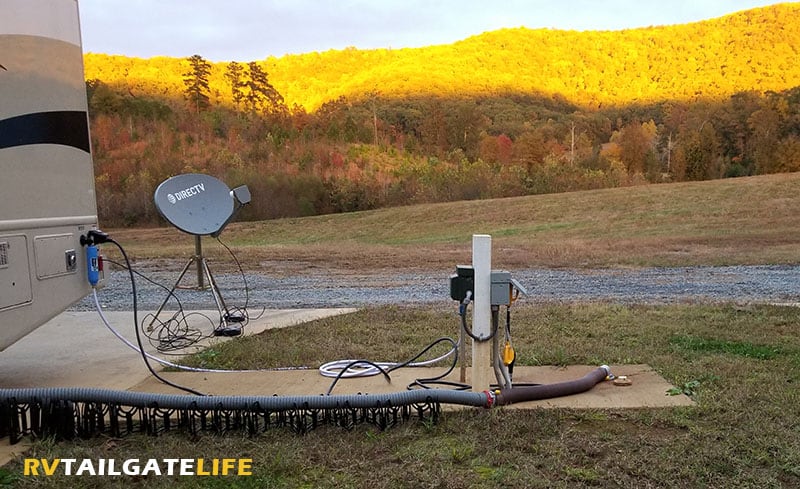
RV Black Tank Chemicals… or No?
Another debate is whether and what to use to treat your RV black tank. And even your RV gray tank.
Many people say that all you need is enough water. You put enough water in the tank, the solids will dissolve and be flushed away. Then, using the black tank rinse (more water) will help pick up the loose ends. And the water will keep the odors away.
But some people say that water is not enough. Or want to give it a boost. Or have to go on those ultra-water conservation methods for boondocking and can’t use enough water to be effective without giving it a boost with a treatment of some sort.
All these treatments should work well in both RV waste tanks, the black and gray tanks. You may need to dissolve the packets first to go down the gray tanks but they will still work.
Stay Away from Formaldehyde Products
First, if you decide to use a chemical treatment beyond plain old water, stay away from products containing formaldehyde.
Formaldehyde is a chemical that is used in many products to disinfect items or to preserve (yep, like in funeral homes).
I can give you a bunch of reasons about why it is bad for the environment – things like water pollution and all that. Some of you may change your minds about using it because of that.
But I know that many of you will only change your mind if it affects you personally. According to the American Cancer Association, and several other similar organizations, formaldehyde has been categorized as carcinogenic meaning it can cause cancer in humans.
That should be enough reason to stay away from those products. But another reason is the short-term affects.
Many campgrounds and dump stations will prohibit you from dumping in their sewer or septic systems if you use products containing formaldehyde.
It is a problem for those on septic systems because of the environmental affects on the ground water. And even on a sewer system, the chemicals can be tough to treat and remove.
On the other hand, Thetford, the maker of RV toilets, as well as RV toilet paper and the Aqua-Kem Holding Tank Treatment which does contains formaldehyde, says that the warnings are overblown.
Thetford says formaldehyde is naturally occurring, breaks down easily, and the problems with campground sewers are wrongly associated with the chemical (it’s the waste to water ratio that complicates campground sewer and septic systems, not formaldehyde).
I don’t know whether Thetford is correct about whether it is safe and all the studies are overblown. However, I do know that some places won’t allow you to dump, rightly or wrongly, if you use formaldehyde (or formaldehyde causing) products and that lack of convenience is enough reason for me to stay away from those products.
DIY Treatment Options
There are two main DIY RV holding tank treatment options:
The GEO Method
The GEO Method has been around RVers for decades now and is widely used by many to keep their RV black tanks in good working order. The GEO Method works by softening water with Calgon and adding detergent to break down waste and to keep it from sticking to tank walls and sensors.
The basic ingredients in the GEO Method are:
The GEO Method is really good at getting the toilet paper off sensors. But that doesn’t mean that it is breaking down waste to prevent the poop pyramid. Or to get rid of foul odors.
To combat the smells, the original Geo Method also recommended using bleach or chlorine in your tanks. But that’s not a good idea either, as over time, the bleach will work to break down the seals that keep your tanks from leaking.
Another reason bleach shouldn’t go in your black tank – urine contains ammonia and bleach/chlorine do not mix with ammonia. Well, it does, but it creates chlorine gas which in strong enough doses can be fatal. It can also be highly annoying, causing watery eyes, runny nose, and couching, in smaller doses.
Black Tank Cleaning Bombs
Did you know that Borax is also a water softener? So no need to double up on water softening by using the Calgon too.
The better answer for RV black tank holding treatments are the Black Tank Cleaning Bombs.
In Black Tank Cleaning Bombs, you still use the Borax laundry detergent. But you also use citric acid to help break down the waste which doesn’t happen in the Geo Method. Citric acid is environmentally safe and won’t hurt the seals in your black tank.
With a little water, you can even create “bombs” or drop-ins like some of the commercially available products (think bath bombs that fizz up in your bathtub).
Other Commercial Treatment Options
Many people swear by Happy Camper in their black tanks. Happy Camper is a powder that you scoop out and into your toilet or sink. It’s highly concentrated but safe for the environment.
TST Drop-In Treatment Packs are also popular as they are all self-contained in a dissolving packet similar to say Tide Pods or various dishwashing pods. TST contains enzymes that break-down large waste particles into smaller particles and are effective in both hot and cold weathers.
Another option is RV Digest-It which uses a bacteria-enzyme blend to treat your RV waste. In particular, the Digest-It bacterias work to liquefy solid waste in your tanks.
Dumping Your RV Waste Tanks
So here we are, we’ve been RVing for a few days and we’ve kept the dump valves closed. But now the tanks are filling up and it’s time to dump.
Generally, full means at least 2/3 full. But if you go on a short trip, you might not get that full and may want to dump prior to storing your RV. That’s OK, if you are going to be storing your RV. If you are about to head out for a long boondocking trip and will be without hookups for awhile (and want to start with completely empty waste tanks).
The general recommendation is still don’t dump until at least 2/3 full! This gives you enough pressure to force all the waste out of the tanks.
Don’t Rely on Your Sensors
 You know why we, as RVers, are always searching for better RV waste tank treatments? It’s because the tank sensors rarely work.
You know why we, as RVers, are always searching for better RV waste tank treatments? It’s because the tank sensors rarely work.
Stuff, usually undissolved toilet paper in the black tank, gets stuck to the sensors. This results in inaccurate readings. Or they become loose.
Who knows why it happens sometimes. Maybe it is some mystery gremlin in there working his magic to frustrate you.
In any case, sensors are often wrong.
Over time, you’ll come to learn your system and how fast you will, on average, fill up a tank.
For the black tank, you’ll know when it is just about or actually full. And no, it isn’t because there is waste coming out of the toilet (although that would definitely be a good sign that your tank is full).
When you hear it “burp.” An RV toilet will burp when you flush it because it can’t expel air any more.
See, there’s a vent that runs from the black tank, up and out of your RV. This vent lets the air out when you add water and waste into the tank.
But when the tank is full, the water and solids are going to close off this vent. That means the only place for the air to go is back inside your toilet.
And it might bring more than just air. Like odors. Like waste. Lovely, right? Hopefully, you just get some sound that sounds awfully like a beer belch.
Anyways, this is all called burping.
The Cyclone vent is pretty cool as it rotates in the wind, making sure that the air from your black tank is properly sucked out instead of trapped like with a regular vent. It’s a pretty easy upgrade to make sure that your tanks are properly vented.
Burping When Tank Not Full
A burp can happen any time that the vent is blocked.
So if you don’t think your tank is full and you hear the burp, then it might be because some waste has clogged the vent.
You can check this by going up on your RV roof and checking the vent.
The cheap, quick check is often done by running a water hose down the vent to see if it flows into the black tank.
You might want a long inspection camera that will let you see down into the vent to see if there is a blockage.
Caution: You may have more than one vent. Or some gray and black tank vents may combine at some point to have one release point. This means that if you put a hose or even an inspection camera down the vent, you’ll want to make sure that you are checking the vent that you believed to be blocked. More than one RVer has reported the vents clear but they really weren’t because of these issues.
Dumping Process
Back to the tanks are full and we are ready to dump!
The whole process isn’t hard.
Just hook up your sewer hose to your black tanks, using a clear adapter at some point in your hose connections.
Once everything is properly hooked up, open up the black tank dump valve. Let it flow completely out, draining the entire tank.
Then close the black tank dump valve. And open the gray tank dump valve.
By emptying the gray tank second, you let the soapy water clean out the sewer hose before you store it. Because who wants to open up the storage area where you keep your hose after it has sat in the hot summer weather if you didn’t clean it out?
In fact, many dump stations have a non-potable hose available for help in cleaning out the sewer hoses. Take advantage if you have one available.
Or if you are at a campground with full sewer connections, use a second, non-freshwater hose, to help clear out the sewer hoses with a little extra rinse.
Once you are done dumping, disconnect the sewer hoses from your RV first. Then slowly lift it until everything that is left in the sewer hose drains down the sewer connection. Then disconnect from the sewer.
Make sure that when you are done that all the valves are completely closed. You’ll only forget to close those once.
The embarrassment factor of hitting the john only to find out you left the black tank valve open will surely keep you from ever failing to close it again.
Black Tank Rinse
So the basic dump process is
- Hook up the RV sewer hoses.
- Dump the black tank.
- Dump the gray tank.
- Rinse the sewer hoses and then store.
- Check that you closed all valves.
There’s one more thing that you should do when dumping your black tank: the RV black tank rinse.
We’ve talked several times now about how your black tank will often have some leftovers after dumping. Hopefully, just remnants of toilet paper. But other solids could be there as well.
We want to make sure we get EVERYTHING out of the black tank when we dump it. The clear adapters let you see when the waste water runs clear, meaning you got all the waste out.
The easiest way to do this is to add extra freshwater to the black tank.
Newer and higher end RVs will have black tank rinse systems built-in to the sewer system (some really high end manufacturers are now even putting in gray tank rinse systems, fancy pants).
In the same compartment as your sewer hose connection, there is another hose connection that connects to the black tank. This will shoot high pressured water into the black tank in all different directions to help rinse off the remaining stuff.
As a reminder: don’t set it and forget your black tank rinse. You are adding water to the black tank. Forgetting it will result in flooding your RV. And coming from a black tank, no matter if it was just emptied or not, is pretty gross.
No Built-In Black Tank Rinse? No Problem!
If your RV doesn’t have an RV black tank rinse system built-in, have no fear. There are two main options for you…
Rinse Sticks
You can stick a hose with a high pressured nozzle attached to it down the toilet to flush out the tank from the inside.
The Straight Swivel Stik is used when your toilet pipe drops straight down into the RV black tank.
Meanwhile, the Flexible Swivel Stik is useful if your toilet plumbing does not drain straight down into the tank.
Both work under the same premise – high pressure water is shot down and into the black tank in all directions, allowing you to reach all parts of the RV black tank.
Dual Flush Pro
The Dual Flush Pro allows you to attach a water hose at the dump valve.
Once you have emptied the black tank, you will close the Dual Flush Pro valve and turn on the water to refill the black tank. Then empty it out again. Repeat for the gray tank.
There are two main disadvantages of the Dual Flush Pro:
- You don’t have to take the hose inside your RV or go inside during the dumping process.
- You can rinse the gray tank out as well.
The disadvantage of the Dual Flush Pro is that it only fills it up to drain again. This method doesn’t give you that high powered rinsing action in all directions that will dislodge the most stubborn of stuck on toilet paper.
That Ice Method? No Go
Whenever someone asks how to rinse out the RV black tanks, inevitably someone will respond with the recommendation of putting a bag of ice in your RV black tank and then driving around, on a bumpy and curvy road.
Sure, all our roads these days are full of potholes and qualify as bumpy.
But the bag of ice doesn’t really do anything for you.
Particularly if you are driving down here in the South, that ice is going to melt before you get your RV engine powered up and hit the road. So you’ll just be driving around with water on a curvy and bumpy road.
Sure, that’ll do you good. But you can go a cheaper way and just add water before you depart. Why waste the ice?
I mean, sure, if you are done with the tailgating or camping weekend, you can dump the rest of the beer cooler ice down the tank. No reason to waste it by water the parking lot.
But it is the water that helps clear up your RV black tank, not the ice.
Add your water, perhaps some black tank treatments, and hit the roads home. Then dump. You’ll be fine.
Dumping the Gray Water While Boondocking
Since your gray tank doesn’t have human waste, the water often doesn’t need to be treated in a waste water treatment facility.
That means that you might be able to dump the gray tank (and only the gray tank) when you aren’t hooked up to sewer.
Some areas won’t allow you to dump the gray water, but some just might. Meaning that when you are boondocking or at a water/electric only spot, you can save time and effort by dumping without using a portable waste tank or taking your whole rig to a dump station.
But it depends entirely where you are. Many campgrounds won’t permit this. And some areas have strict rules about where and when you can do it.
For example, some areas say that kitchen sink waste water is black water and needs to be treated the same as your toilet waste. This will restrict you from dumping your gray tank on the ground.
As a general rule though, in areas where you can dump your gray water on the ground and not into a sewer connection, you should not dump anything directly into a source of water, such as a stream, river, or lake. This includes storm water drains (a la Uncle Eddie even though that was the black tank he was emptying).
You should also ensure that no food or greasy debris is dumped with the water. And your dumping shouldn’t create any nuisances – say a small stream of water or puddles around the dump site. It should be a slow dump, to allow the water to soak into the ground.
An often used method of preserving your gray tank while boondocking is to wash the dishes outside using a portable camping sink. Once the washing is done, you can select a different place each time to dump the leftover water (but ensuring that no food debris is also dumped). Dump in areas with plants to help absorption quicker (not gravel or pavement).
If you are going to be using this method to dump your gray tanks, also make sure all the soaps and other products that you are using and could go down the gray tank are environmentally safe and biodegradable.
Use your careful discretion if dumping your gray water on the ground is permitted in areas that you are camping.
Using Portable Dump Tanks
If you are RVing without a sewer connection, you generally have two options for dumping your RV waste tanks:
You can pack everything up and take your rig to a dump site to connect to the sewer there.
Or you can use a portable RV dump tank to empty your RV waste tank into and take the portable tank to the dump site and empty it.
Some people find that not having to pack everything up is the preferred method and use these portable dump tanks.
Unfortunately, that means that you are routinely missing the black tank rinse step above. And if your portable tank isn’t large enough to completely empty your black tank, you could be setting yourself up for a nasty poop pyramid by draining the liquids but not the solids.
If you are going to go the method of using a portable dump tank, then you should take the steps of moving the RV every couple of dumps to the dump site so you can do a full dump and rinse process. Maybe even throw an extra rinse in there too just to be sure you got everything.
Another piece of advice if you use a portable dump tank, get one with FOUR wheels. I don’t care how strong you are, by the time you fill one of these tanks up, they are way too heavy to be trying to drag on your own or on two wheels. Get the four wheeler that you can attach to your truck’s tow hitch.
Dumping Your RV Waste Tanks at Home
Wait, what? You don’t need to go to a campground or other dump site after a tailgate or boondocking trip to dump your RV waste tanks?
That would be correct, kind RVer.
Once I figured this out, because my dad is awesome and told me that it should work and to give a try, it was a game changer for me! I no longer had to wait at long lines at dump stations. And since I live in Atlanta, I don’t have to travel forever and ever to even find a dump site.
Seriously, the closest one to my house is like 30-45 minutes away, without traffic. And if you know anything about Atlanta, there is never a time that there is no traffic.
My sticks and bricks house is on the public sewer system. The sewer line goes down the street, so my house connects to the sewer system through a line going from my house to the street.
In the middle of that line, right in the middle of my front yard, is a sewer cleanout pipe.
This cleanout pipe looks just like a sewer connection at a campground – three inches and PVC pipe. It’s got a top that screws into it and when I unscrew it, the elbow connector screws right in.
It’s like magic. Or the use of standards in engineering. But I like magic better.
I use it just like I would a dump station anywhere else. I can even run the black tank rinse from a hose at the house to the black tank rinse system.
Magic! At a minimum, a total game changer for an RV tailgater!
I’m fortunate in that it is pretty level from the street to the back of my house (it’s on the way back of my part that gets into weird sloping situations). That means I’m not too worried about gravity and pumping the waste uphill (just across 40 feet or four sections of sewer hose).
Sometimes though, the cleanout pipe may be uphill. Which brings me to the next item in this ultimate guide…
Using RV Macerator Pumps
When you need to pump waste uphill, then use an RV Macerator Pump.
The macerator pump is a 12 volt pump using power to grind up the waste and to force the contents uphill.
As another added benefit, many people will use standard garden hoses which are so much easier to store than the traditional three inch sewer hose.
When you are having to move waste uphill, using this extra boost is so much better than having to “walk to the hose” where you empty it, then create the downhill process by picking up sections of the hose at a time. Yeah, that’s slow and so not efficient.
An RV Macerator Pump is also useful at campgrounds that don’t have well planned out sewer connections or have higher than normal sewer connections because of local flooding issues. Some times, that little extra boost is what you need to dump your RV tanks.
Post Dump Process aka Preventative Actions
And wait! Just one more step after you are done dumping. (Sorry, I felt like being a tacky sales person for a second)
After you have dumped your tanks and rinsed them out, you should take a little preventative action to stop any future problems in your RV waste tanks.
Lube the Valves
So what would be worse than having a full tank and being without a place to dump your tanks?
How about being at the dump site and not being able to get the valves to open up!
Valves can get stuck because they are not well lubricated. In particular, the rod that connects the handle to the plastic piece inside that is holding all the waste contents back. You want this rod and plastic piece to move when you push or pull on it!
So get you some silicone lubricant to add to that rod. Then work it in by pushing and pulling on it a few times. This is great at the end of your dump and rinse process, but before you add water or treatment to the tanks.
Side note: do NOT use regular WD-40. It’s not going to work well in this application and will actually make things worse. There is so much plastic at the dump valve that the WD-40 can harm. And WD-40 attracts dust and dirt that will really gum up the works here. Oh, and WD-40 will dry up pretty quickly. Use it as a quick lubricant, not a long acting lubricant.
Use a silicone based lubricant.
Add Water to the Tanks
And wait! We aren’t done yet. There’s still another thing left for you to do.
Remember way back at the beginning when I said water was good for your tanks? Yep, this is again proving that point.
Immediately after you have closed everything up, go in and add some water to each of your RV waste tanks. This is also a great time to add any RV holding tank treatments.
Adding water to the empty tanks, even if you are storing your RV for a time, is a great way to make sure that the tanks don’t dry out. This will keep the seals from drying, cracking, and leaking in the future.
And any remaining solids that somehow escaped the reach of the dumping and the rinsing will have time to soak and hopefully be liquid and ready to move out next time you dump.
This is definitely where RV tailgaters have an advantage – we are always on the move. The water sloshing around in a nearly empty tank can be as awesome as the black tank rinse for getting to every corner of the tank. If you have the opportunity, dump your tanks at the campground or dump station, add water to about a 1/4 to 1/3 of the tank and any desired treatment, drive home, and dump again at or near home. You’ll be amazed at what comes out.
When it comes time to store your RV for winter, pour some RV antifreeze down the drains and into your RV waste tanks. While you won’t need to fill them up, having a little anti-freeze at the bottom of the tank will help protect those valves from busting when the water freezes up.
Smells Under the Sink and Other Gray Tank Issues
As a group, we all spend most of our brain power on RV waste tanks on the black tank. But that doesn’t mean that the gray tank doesn’t have its own issues.
First off, most RVs don’t have a way to rinse out the gray tank like the black tank. This means that debris can build up in the gray tank.
This is why is is a pretty important rule that you don’t allow anything other than soap and water to go down the drains. But that’s hard when you are say shaving or washing your hair.
Or cooking and food scrapes go down the sink drains.
First, you’ll want to clean off your plates as best as possible to prevent any food from getting in the sinks.
The next best thing to prevent hair or food scrapes is to get appropriately sized drain strainers. This multi-pack is great to cover all your sinks and shower drains for one low price.
It’s also why you should leave the gray tank valves closed between dumps. I know a lot of people like to leave the gray tank valve open until just before they need to flush the black tank. People fill up the gray tanks pretty fast, especially when hooked up to campground water. There’s no limit on the showers, dish washing and clothes washing that will go on.
But just like it allows the solids to settle into the black tank, so does leaving the gray tank valve open allow the solids to settle. And while it may not be a poop pyramid like the black tank, it can still result in nasty odors and blockages that will lead to flooding inside your RV.
Air Admittance Valves
If you are trying to identify the source of some foul odors inside your RV, you might think the source is coming from under your kitchen or bathroom sinks. Or even the shower or the washer.
Assuming that something didn’t crawl in there and die, it is likely that you air admittance valve has gone bad.
The AAV is a relatively cheap and innocuous looking item in your RV. It is a cap that goes on the end of a plumbing pipe.
There is a spring in there that opens when you are draining water down your sink. The AAV allows air to enter into the pipes to allow the water to drain properly. Then it closes up, to stop odors from coming into the RV when you aren’t draining water (when you are draining water, the water itself will stop the smells).
If this spring breaks, you could end up with a slow draining sink. Or smells coming up into the RV.
It’s an easy DIY fix if it breaks, fortunately.
Getting Rid of the RV Poop Pyramid
So you know how to take care of your RV waste tanks, but somehow the poop pyramid still happened.
Let’s just blame it on the previous owners and not something you did. Or those friends or family that borrowed your RV. Even though YOU know what to do, they didn’t know what they were doing. We both know it wasn’t YOUR fault.
Or perhaps you came here to learn after you got the poop pyramid and now you need to get rid of it before you put all this great knowledge to use for the future.
In any case, you have a poop pyramid and you need to figure out how to get rid of it.
What is the RV Poop Pyramid?
The RV poop pyramid is what develops when you use your RV black tank for an extended period of time with the black tank valve open, continually dumping into the sewer connection.
The water drains off. But there isn’t enough water to flush the solid waste out of the tank.
Over time, a pyramid of poop forms. And it’s not soft and squishy or nearly liquid since all the water drains off. In fact, the RV poop pyramid often becomes hard as rock and impossible to get out.
The poop pyramid is the number one reason why I recommend that you leave your black tank valves closed until the tank is full and you are ready to dump.
And a similar pyramid of food waste, grease, and other oils and waste can form in the gray tank too.
Solutions to Rid the Poop Pyramid
Start by closing the black tank valve. Nothing good is going to come from leaving it open right now.
Next, we need water. And time. Lots and lots of water and time.
Hopefully, you have at least a little space in your RV black tank to put in some water. Pour in boiling water until the tank is full. Then let it sit. Hopefully for several days.
Let that water really get in there and soak into the poop pyramid. And liquefy everything that has become solid.
Then dump. And rinse.
It may take several attempts to really get the poop pyramid broken up, attacking another layer each time you fill with water and dump.
To speed up and help the water, you can add your normal black tank treatments.
Or you can add Bio Clean Drain Cleaner. Since this has bacteria in it, you will want to let the water cool just a bit – to warm instead of boiling. Boiling water will kill the bacteria. Warm water will encourage them to thrive.
The bacteria and enzymes in the Bio Clean Drain Cleaner attack the dead organic waste in your tank. So poop, grease, hair, food, soap scum and more that could be forming that poop (or whatever is in your gray tank) pyramid.
The bacteria and enzymes start working when you mix the Bio Clean with water. The bacteria population can double in size every 30 minutes! Just think of them as the mini-scrubbing bubbles of your RV black tank and how much work they can do in a few days.
Just like with cleaning products, don’t mix other treatment methods in with the Bio Clean. The other treatments could kill off the beneficial bacteria that you need to decompose that poop pyramid!
Ditching the Black Tank
Some RVers are tired of all of this. ** waves hands at all the above **
They’ve decided that they should get rid of the RV black tank.
Instead of a traditional holding tank, they use a composting toilet.
With a composting toilet, the waste is separated into two components, the wet and the dry. Basically, the urine is diverted to a separate tank from the poop.
Think of it this way, you are intentionally creating a poop pyramid like situation. But without the pyramid. Just liquid in one place and solids in another.
If there is a compost pile around, you can empty the solid waste into the composting pile. Like you would certain other animal waste. It’s actually beneficial to the ecosystem in this form.
If there isn’t a compost pile available, you can add the waste to an environmentally friendly biodegradable bag and throw it into the trash. Once it makes it to the landfill, it will decompose there.
For the liquid waste, you can divert it to the gray tank or poured down a sewer line elsewhere. In areas that permit it, you can also dilute it and sprinkle on the ground to water the ground there.
Since you don’t need the black tank anymore, you can convert it into a second (or third if you already have a galley gray tank in addition to the main gray tank) gray tank. This means you have more gray tank capacity for boondocking trips.
Or you can remove the black tank and add a new fresh water tank, again adding capacity for your boondocking trips (especially if you often boondock in an area that lets you slowly dump gray water on the ground).
You’ll also find that the waste doesn’t smell like black tank waste. And the composting toilet uses no water for flushing or for maintaining the waste tank.
RV Waste Tanks Can Be Managed Well
 So yes, newbie or experienced RVer, the RV waste tanks can be managed quite well. No reason to reenact the scheme from RV and watch the black tanks explore.
So yes, newbie or experienced RVer, the RV waste tanks can be managed quite well. No reason to reenact the scheme from RV and watch the black tanks explore.
If you have questions about how to use or maintain your RV waste tanks, comment below and I’ll see what we can do to answer your questions.
Like this RV guide? Pin for later!
Even More RV Waste Tank Know-How
More information on RV waste tanks, including both the black tanks and the gray tanks.










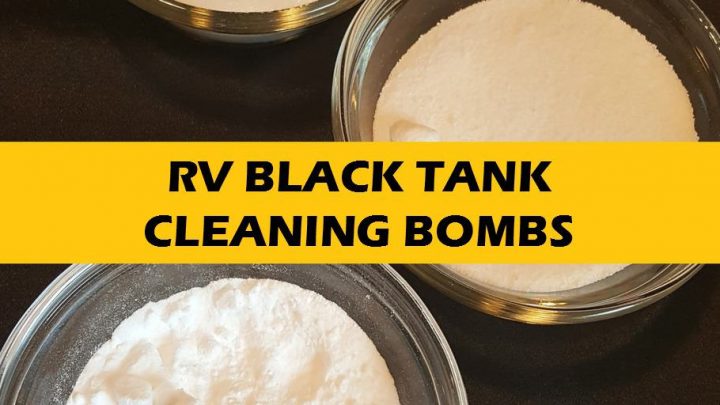
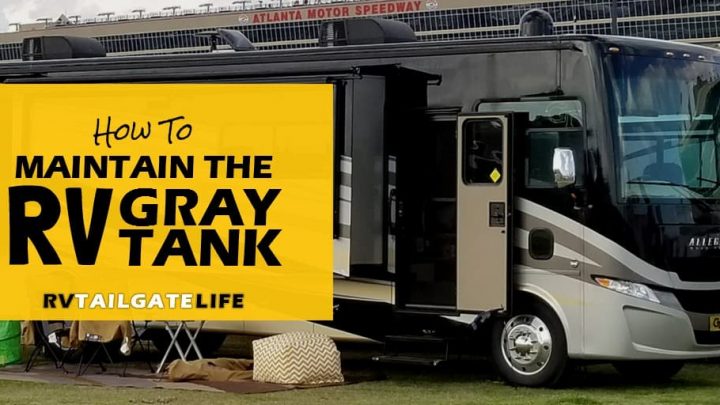
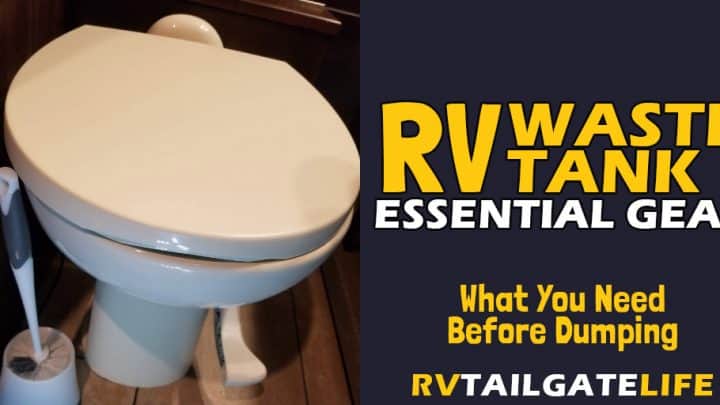
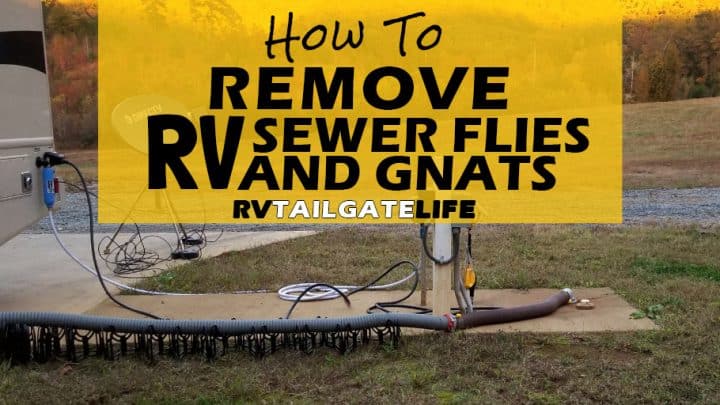
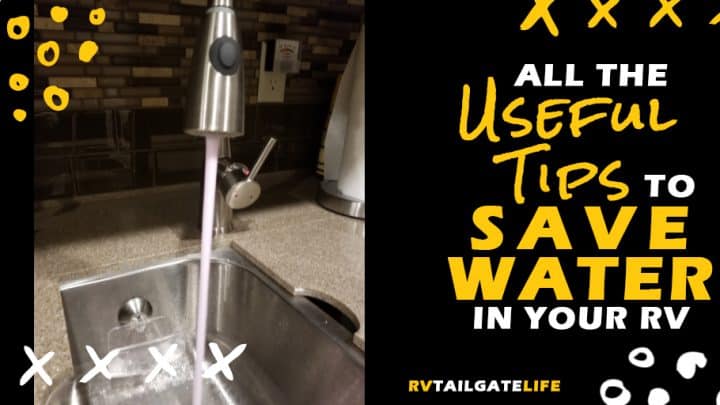
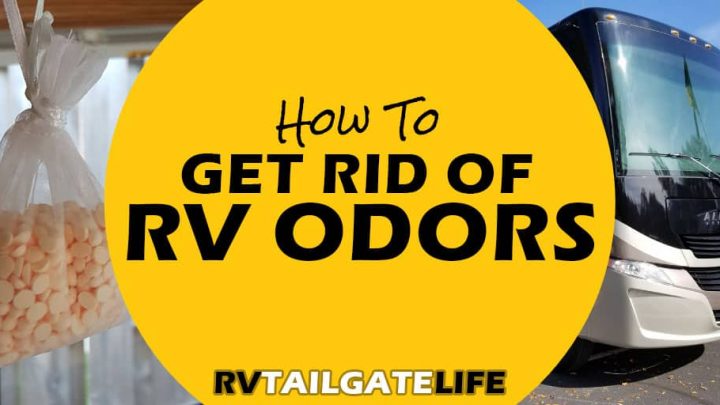
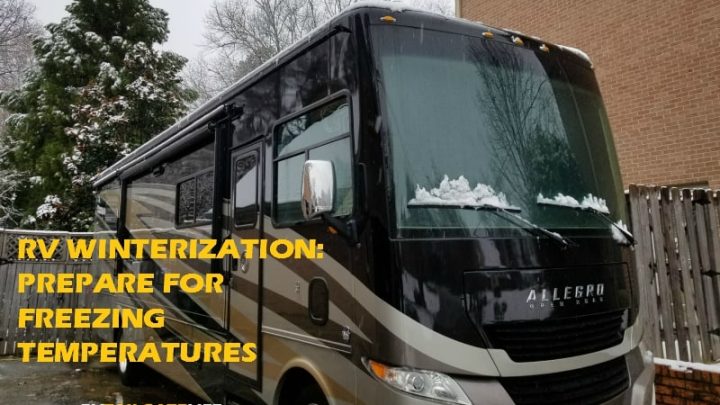
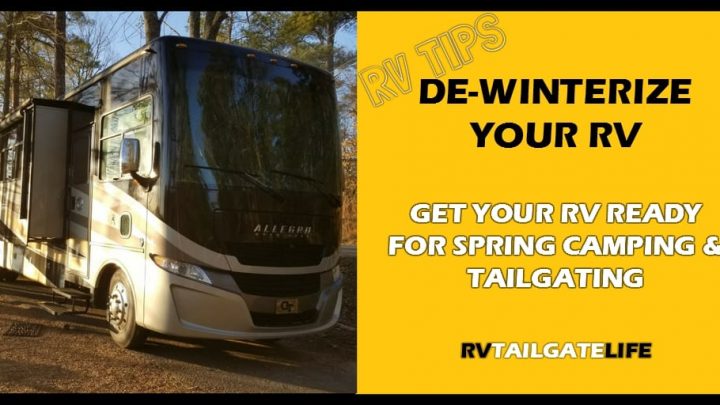
Hi Kimberly!
This is so helpful. We are newly retired, and just came home with our Tiffin 32 SA two days ago. We are complete newbies, though both my husband and I have camped in our younger days. We broke the rules and didn’t buy anything cheap or used, because we figured we would be better off purchasing what we really wanted and taking the time to learn. Husband is an engineer by education, former Air Force pilot and airline pilot, so we know we can do this. Thanks for the extensive explanation of black & gray tanks procedures. I am going to have him sign up for your newsletter–pronto!
Connie, thank you for the kind words! Let me know if I can help answer any questions on your Tiffin. I also highly recommend checking out the Tiffin Facebook groups if you aren’t there already. There are some great ones that have lots of knowledge just waiting for you.
Don’t hesitate to ask questions – if nothing else, they can make for some new blog posts. Because if you have questions, so do a lot of other people.
Kimberly
I have a problem where my galley tank will not empty. I thought at first the drain was plugged because the sink was filling up so I ran a snake down and nothing. I then cleaned the P-trap. We also have a dishwasher in the line where an oven normally goes. I opened that line (same line as sink but further down the line) and ran the snake as far as I could down that too. There’s no smell in the RV. I go and open the galley tank and nothing comes out. The black and grey empty fine. When I pull on the lever to empty the galley it does seem to feel like the valve is opening but nothing comes out. The meter says its full and when I run water in the sink it does start to fill up. It will go back down but extremely slowly, like a day or so where the level will be inside the drain. It worked fine the last time we used it a couple years ago. I winterized it and did the winterize lever but drained all that out and the lever is off again. Any suggestions? Would a bad admittance valve stop the tank from draining?
Hi Rick. Sounds like you have found yourself a doozy of a problem.
I’m wondering if you haven’t got something similar to a poop pyramid in your galley tank. Remember, this tank will have any debris that has gone down the drain of your sink or that dishwasher you installed. And if you use pods in the dishwasher, those are known to create problems in low water applications because the covers won’t dissolve very well.
If you drained the water out of this and then winterized, it could make all the stuff quite solid in there. One reason that I recommend that you don’t put anything like food debris down the sink. Also why you should leave the gray/galley tanks closed until you dump as well – it helps to flush out all that stuff and not let it build up.
If this is possible, perhaps the best thing to do is to make sure the tank is closed and then fill it with water. Use the Bio Clean Drain Cleaner mentioned above to try to dissolve the stuff in the tank. Let it sit for a few days so that it can drain into the tank and then get to work. It might take several tries to get it cleared out as it eats at the various layers of the pyramid.
Let me know if that works. If not, we can keep trying to find some more solutions.
Kimberly
It was interesting when you said that adding a fresh water tank and removing the black tank can add capacity to our RV. My husband and I want to purchase a used RV so we can start taking our kids on frequent camping trips in the mountains. We plan on using an RV service to make some upgrades, so the suggestions you shared here are much appreciated!
Absolutely great article! I am researching Black tank issues because a family member has been flushing baby wipes for months down the toilet. Guess what has happened? Oh, I’m sure you’re right… Any suggestions on how to fix? I’m limited on funds, any possible DIY?
Brandi,
Yikes! Yeah, baby wipes are not good! I recently had a friend that flushed female sanitary products down the toilet during a weekend trip. So I feel your pain.
The best thing to do is to keep flushing the tank out. Fill it all the way up and then let gravity do it’s thing. Hopefully the wipes were marketed as “biodegradable” or “flushable” – many are these days. If so, I’d recommend that you use some enzyme cleaners to help speed up the process. I recommend Bio Clean. Fill up the tank with warm (not hot) water. Then mix in a scoop of Bio Clean and let it sit for as long as you can. Eventually the water and the enzymes will help break up the wipes. (Easier for part-time RVers that don’t need to use the toilet on a regular basis).
That’s what I did after my friend messed up my black tank. I filled it (using the black tank rinse) and then let it soak and soak some more. Fortunately, I was moving the RV soon, so I also got the agitation from driving. That helped mix it all up. Then when I flushed, because it was full, there was a lot of quick draining/gravity pushing a lot of stuff out. It’s likely gonna take several cycles to get it all out – so be at a full-hookup spot.
Kimberly